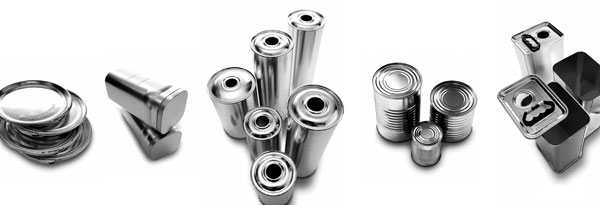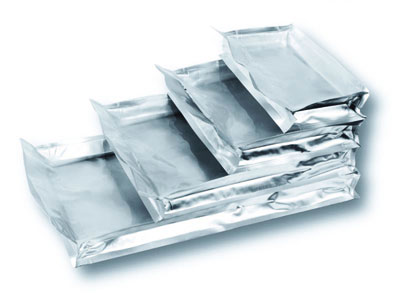Metal packaging – Data 2012
STEEL AND ALUMINIUM With 925,000 t of packaging produced, Italy is among the top packaging producers in the European ranking. Size of the market, user sectors and format characteristics.
Rated by Pira in 470 billion dollars, the global market for packaging sees steel and aluminum packaging occupy a share of approximately 16%, amounting to € 80 billion and with an annual average growth trend of 1.2-1.3%. Again refering to Pira processed figures, the production of metal packaging is localized 28% in North America (Canada and the USA), 24% in the EU, 28% in Asia (where Japan and China hold sway); the remaining 20% in other geographic areas. Asia, South America and Russia show the highest growthrates.

The Italian market
In 2012 Italy produced 925,000 t of metal packaging, thus being among the first in Europe (that accounts for around 24% of production), emphasizing among other things the importance of the product category for the country.
Countless innovations have marked the life of this packaging item, both in terms of sectoral spread and technology; here we cite the significant reduction in the average weight, made possible by the gradual downgauging of steel or aluminium laminates, the application of easy open apertures as well as progress in lithography that have in time led to the creation of true works of art.
Steel packaging: size and characteristics of the market
Because of the general economic crisis, in 2012 Italian production of steel packaging dropped by 4.5% (757,000 t); on the basis of preliminary figures, the increase in turnover in 2011 (1,410 million euros) should not exceed 2-4%. Between 2000 and 2007 the sector showed a substantial stability in production (data in tons); if we consider the significant reduction in the average weight (about 30%) involving the various categories of steel packaging, the real growthrate is around an annual average of 1%.
From 2008 to 2012 steel packaging instead showed an annual average drop of 4% per year.
With the recovery of the manufacturing industry it is believed that the sector could put in an annual average growth trend of around 1-1,5%. Steel packaging is divided into tinplate packaging and largescale steel drums.
Tinplate. In preliminary figures, the area of tinplate packaging in 2012 showed a production of 663,000 tonnes, of which 65% for the domestic market and 35% for exports (the flow of imports is limited).
Several "sub" categories exist, depending on the area of application:
- In quantitative terms, the open top category is the most important (40%), used in the canned food (canned vegetables, canned fish products, petfood etc.).
- followed by general line packaging meaning products destined for the chemical-oil sector (27%) used in the packaging paints, lubricants, inks, etc..;
- globally closures, crown caps and twist-off capsules account for 15% of production. It should be noted that 60-70% of closures are exported.
- the remaining 18% is made up of containers used in the packaging of edible oil (olive oil and seed oil), spray cans and fancy tins (containers for biscuits, chocolates, tennis balls, etc..).
Largescale drums. The raw material used in this case is cold formed sheet metal not coated with tin, and in 2012 the area showed a production 87,000 tonnes, of which 10% was exported (modest the flow of imports).
Domestic demand stands at around 80,000 t.
The most commonly used type of drum is the 200 kg capacity (60% of use), followed by the 100 and 300 kg capacities.

The drums are essentially used in the chemical sector, followed by the food sector; in the latter case, their use concerns the storage of products waiting to be packaged and sent to distribution.
Aluminium packaging: size and characteristics of the market
For aluminium packaging 2012 was also a difficult year: according to preliminary results, in fact, production has not exceeded 2011 figures, which in turn were down 2% on the previous year.
In 2011 turnover was 2,300 million euros and 2012, generally speaking, should have marked an increase of 4-5%
Over the last decade the aluminium packaging industry has shown a 3% annual average growthrate regarding activity in terms of weight. Considering the reduction in the average weight of different types of packaging, the growthrate should be put at an annual average of 4%. Over the years the development of special alloys has enabled very thin layers to be obtained, facilitating the use of aluminum in a variety of packaging applications, both in relation to the production of containers and flexible converter packaging.
Aluminium mix. In the case of aluminum, various types of materials contribute to the production of packaging: thin sheet (less than 200 microns), can stock, can body and pads:
- Foil stock is employed to produce foil and capsules;
- Can stock is used to produce beverage cans;
- Can body is used to produce bodies for food cans;
- Pads are used to produce spraycans.
The different products comprise countless alloys that vary according to the type of production and the various uses.
Aluminum packaging is used in accordance with this division (the percentages refer to production in tons):
- containers 24% (of which 60% beverage cans, 17% food cans, 13% flexible tubes and 10% aerosol cans).
- closures 11.4%
- food trays 8.6%;
- wrapping foil 8.5%;
- converting foil 43%;
- other 4.5%.
Based on preliminary estimates, in 2012 the Italian production of aluminum packaging was 175,000 tonnes, including 99,000 tons of packaging (containers, closures, containers and foil for industrial wrapping) and 76,000 t of converter foil for flexible packaging.
Exports are sizeable, accounting for 50% of production, imports in turn cover 25% of consumption.
Plinio Iascone
Istituto Italiano Imballaggio

















